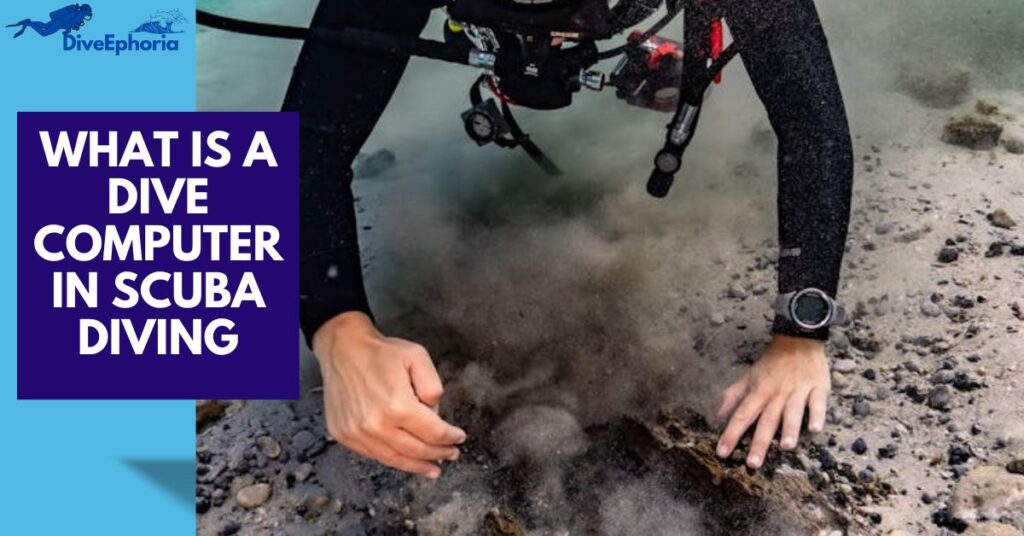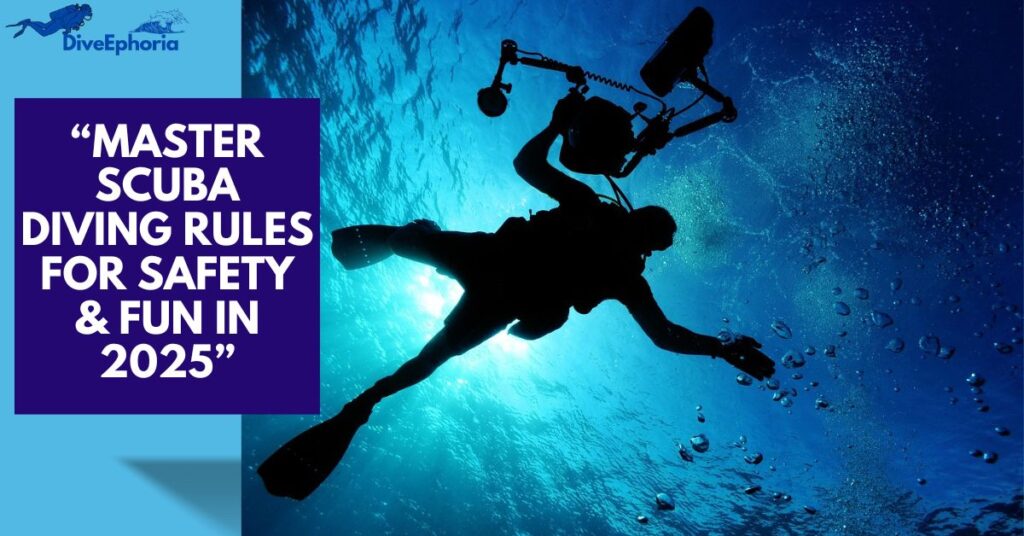
Table of Contents
Introduction
Scuba diving opens up a mesmerizing underwater world teeming with life and wonder. However, despite its allure, diving can be risky if proper safety measures are overlooked. Every year, many divers—both beginners and experienced—face accidents or close calls due to ignoring essential rules or underestimating the dangers beneath the surface. The problem is that without a solid understanding of scuba diving safety protocols, these risks increase significantly, potentially leading to serious injuries or even fatalities.
This is why knowing and strictly following the latest scuba diving rules is absolutely crucial. Whether you’re just starting out or have hundreds of dives under your belt, having a clear, up-to-date guide can make the difference between a breathtaking adventure and a hazardous experience.
This comprehensive guide to scuba diving rules in 2025 will equip you with all the must-know safety tips, including how to recognize and respect your personal limits, the golden rules every diver must follow, safe ascent techniques, and what you need to know if you plan to fly after diving. By the end of this article, you’ll be fully prepared to dive safely and confidently—because your safety is the ultimate treasure beneath the waves.
Why Scuba Diving Rules Matter
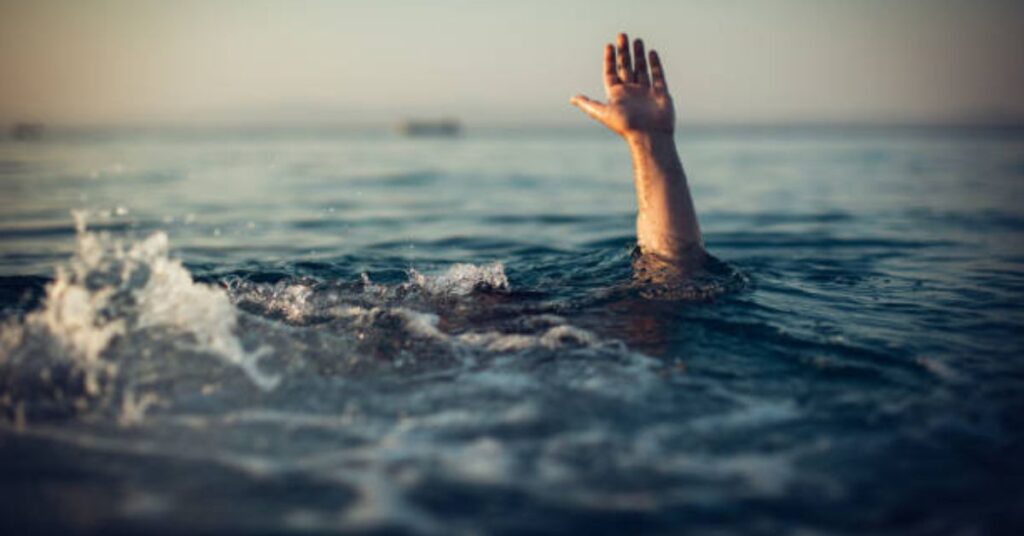
Scuba diving is an incredible adventure, but it comes with inherent risks that make following established scuba diving rules essential. These rules are not just arbitrary guidelines—they are carefully designed safety protocols that protect divers from serious injuries and life-threatening conditions. One of the most critical principles, often called the golden rule of scuba diving, is to never hold your breath underwater. This rule helps prevent dangerous lung expansion injuries caused by rapid changes in pressure during ascent.
Ignoring scuba diving safety rules can lead to severe medical emergencies such as decompression sickness (DCS)—commonly known as “the bends”—and arterial gas embolism (AGE), both of which can have devastating consequences if not treated promptly. Decompression sickness occurs when nitrogen bubbles form in the bloodstream due to improper ascent rates or exceeding no-decompression limits, while AGE results from lung over-expansion and air bubbles entering the bloodstream. These risks highlight why strict adherence to safety protocols is non-negotiable.
Beyond personal safety, following scuba diving rules also protects fragile underwater ecosystems. Responsible divers contribute to environmental conservation by avoiding contact with coral reefs, marine animals, and other sensitive habitats. This ensures that the breathtaking underwater world remains pristine and accessible for future generations of diving enthusiasts.
Moreover, abiding by local scuba diving regulations and ethical guidelines helps maintain a sustainable diving culture worldwide. This means respecting protected marine areas, properly maintaining gear, and being mindful of dive site conditions. Sustainable diving practices not only enhance your diving experience but also support marine biodiversity.
In summary, knowing and following the best scuba diving safety tips is essential for preventing accidents, protecting your health, and preserving the underwater environment. Whether you’re a beginner learning the ropes or an experienced diver upgrading your knowledge, committing to these rules is the foundation for a safe and enjoyable dive every time.
The Most Important Rules of Scuba Diving
Mastering scuba diving safety starts with understanding and following a few fundamental rules that every diver—whether beginner or experienced—must know. These essential guidelines help protect you from injury, ensure a smooth dive, and contribute to a positive underwater experience. Let’s dive deeper into the most critical scuba diving rules you need to follow in 2025:
1. Never Hold Your Breath
The golden rule of scuba diving is simple but life-saving: never hold your breath while underwater. As you dive deeper, the surrounding water pressure increases, compressing the air in your lungs. When you ascend, the pressure decreases and the air expands. Holding your breath during ascent traps expanding air in your lungs, which can cause serious injuries such as pulmonary barotrauma or arterial gas embolisms (AGE)—where air bubbles enter your bloodstream, potentially causing life-threatening complications.
Quick Tip: Maintain a steady, continuous breathing pattern throughout your dive. Take slow, deep breaths to help regulate your buoyancy, conserve air supply, and reduce anxiety underwater. Practicing calm, relaxed breathing also lowers your heart rate, which helps extend your dive time and keeps nitrogen absorption within safe limits.
2. Ascend Slowly and Safely
One of the most critical aspects of safe scuba diving is controlling your ascent speed. A rapid ascent increases the risk of decompression sickness (DCS), commonly known as “the bends.” This condition occurs when nitrogen absorbed into your body tissues under pressure forms bubbles as pressure drops too quickly during ascent. These bubbles can cause joint pain, dizziness, paralysis, or even be fatal if untreated.
Rule of Thumb: Always ascend at a controlled rate of approximately 30 feet (10 meters) per minute or slower. Additionally, perform a safety stop—usually for about 3 minutes at 15 feet (5 meters) depth—near the end of your ascent. This pause allows excess nitrogen to safely off-gas from your body, significantly reducing your risk of DCS.
Using a dive computer or a depth gauge with a timer helps you monitor your ascent speed accurately and reminds you when to make safety stops. Remember, patience during ascent is a small price to pay for your long-term health and safety.
3. Always Dive with a Buddy
Scuba diving is a team sport, and the importance of diving with a buddy cannot be overstated. A dive buddy acts as your lifeline in the underwater environment. Whether it’s assisting during equipment malfunctions, sharing air in an emergency, or helping you navigate tricky underwater conditions, having a trusted partner increases your safety exponentially.
Key Steps to Buddy Diving:
- Plan Your Dive Together: Discuss the dive plan, including maximum depth, bottom time, entry and exit points, and emergency procedures before entering the water.
- Pre-Dive Safety Checks: Perform a thorough buddy check using the BWRAF system—check Buoyancy devices, Weights, Regulators, Air supply, and perform a Final “okay” signal. This ensures both divers’ gear is functioning perfectly.
- Stay Close and Communicate: Maintain visual contact during the dive, use established hand signals, and stay within an agreed distance. This way, you can quickly assist each other if needed and share the joy of underwater discoveries.
Scuba Diving and Flying Rules
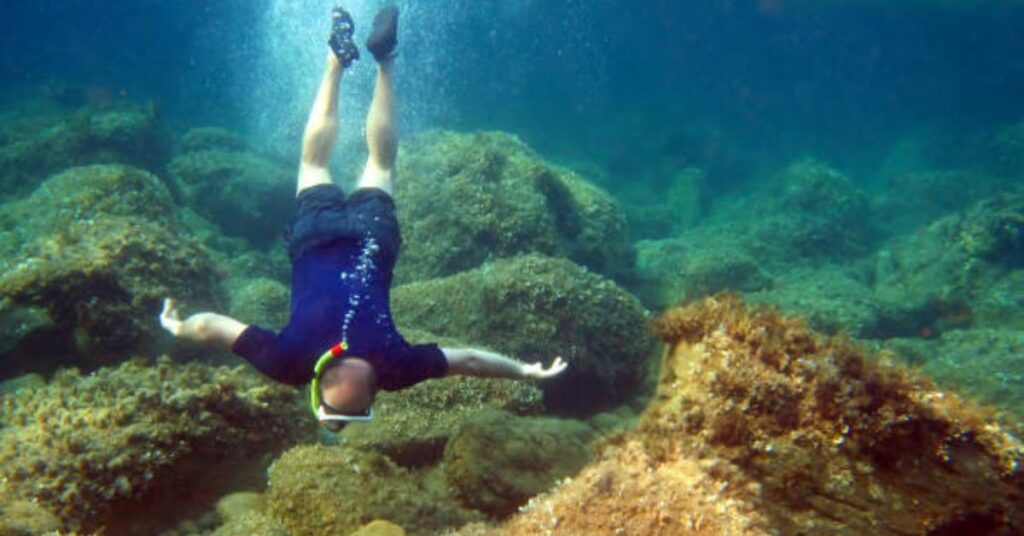
One of the most important but often overlooked safety considerations for scuba divers is understanding the impact of flying after diving. Changes in pressure during air travel can significantly increase the risk of decompression sickness (DCS) if proper waiting periods aren’t observed. This makes knowing the scuba diving and flying rules absolutely essential—especially for divers who plan to fly soon after a dive trip or live far from their dive locations.
When you ascend from a dive, your body contains increased levels of dissolved nitrogen absorbed from breathing compressed air underwater. Flying too soon exposes you to lower cabin pressures at altitude, which can cause nitrogen bubbles to expand dangerously inside your body, leading to altitude-related decompression sickness.
Key Guidelines for Flying After Scuba Diving:
- Wait at least 12 hours after a single, no-decompression dive before boarding a plane. This minimum surface interval helps your body safely eliminate excess nitrogen.
- For multiple dives, deep dives, or repetitive diving over consecutive days, wait 18 to 24 hours before flying to allow sufficient off-gassing.
- Always refer to your dive computer’s recommendations or dive tables, as “no-fly” intervals can vary depending on your specific dive profiles, depth, and personal physiology.
Fun Fact:
The “no-fly” times are not one-size-fits-all. They depend on how long and deep your dives were, your physical condition, and even environmental factors. Some modern dive computers provide tailored guidance to ensure your flying plans won’t jeopardize your health.
Failing to follow these guidelines can result in serious and sometimes life-threatening complications. So, if you’re planning a scuba diving vacation or live in a region where you’ll be flying after diving, always prioritize safe surface intervals and heed the recommended wait times.
Scuba Diving Equipment Rules
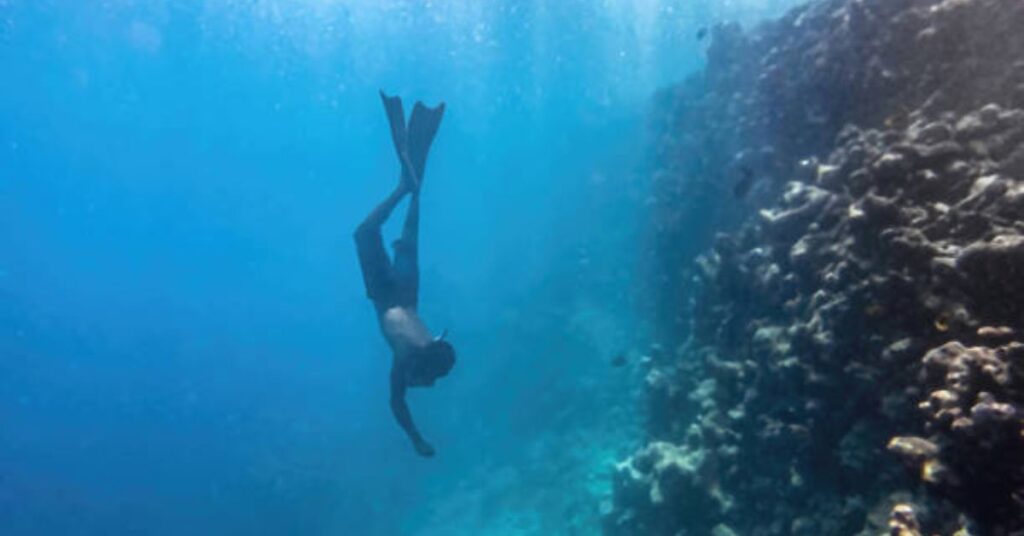
In scuba diving, your equipment isn’t just gear—it’s your lifeline underwater. Proper maintenance, regular inspections, and understanding how your equipment works are essential for a safe and enjoyable dive. Following strict equipment safety rules helps prevent malfunctions that could jeopardize your dive or your life.
The Pre-Dive Safety Check: BWRAF System
Before every dive, conducting a thorough pre-dive safety check is critical. The BWRAF checklist is the industry-standard system used by professional divers worldwide to ensure all equipment is functioning perfectly:
- Buoyancy Control Device (BCD): Test your BCD by inflating and deflating it fully. Ensure there are no leaks and that the inflator and dump valves operate smoothly. Proper buoyancy control is key to safe descents, ascents, and maintaining neutral buoyancy underwater.
- Weights: Check that your weights are securely fastened and easily releasable in an emergency. Proper weighting is essential to control your buoyancy and avoid rapid ascents.
- Regulators: Inspect your primary and alternate regulators for proper airflow. Breathe through each regulator to confirm they deliver air smoothly and without leaks.
- Air: Confirm your air tank valve is fully open and check the pressure gauge to ensure you have enough air for your planned dive plus reserves. Running out of air underwater is a preventable risk when you monitor your supply carefully.
- Final Okay: Conduct a final visual and functional check of all gear, and signal your buddy that you’re ready to dive. This last step ensures no details are overlooked before entering the water.
Pro Tip: Buddy Equipment Familiarity
It’s not enough to only know your own gear—become familiar with your buddy’s equipment as well. In an emergency, such as an out-of-air situation, knowing how your buddy’s gear works can be life-saving. Practice switching regulators and signaling so you can assist one another seamlessly.
Regular Equipment Maintenance
Beyond pre-dive checks, regular professional servicing of your scuba gear is crucial. Regulators and BCDs should be serviced annually or according to manufacturer recommendations. Proper maintenance extends the lifespan of your equipment and ensures it performs reliably when you need it most.
Scuba Diving Safety Rules for Beginners
Starting your scuba diving journey is exciting, but beginners must prioritize safety to build confidence and enjoy every dive. Following these beginner-specific scuba diving safety rules will help you avoid common pitfalls and set a strong foundation for your underwater adventures.
1. Dive Within Your Limits
One of the most important safety rules for beginner divers is to stay within your certification level and personal experience. Diving beyond your current training or comfort zone can quickly lead to stress, panic, or dangerous situations underwater. If you’re newly certified, avoid challenging dive sites such as deep wrecks, underwater caves, or areas with strong currents until you gain the necessary skills through advanced courses.
Remember, scuba diving is not a race. Focus on mastering basic skills like buoyancy control, mask clearing, and emergency procedures before taking on more complex dives. Always plan dives that match your current certification level and dive conditions you feel comfortable with.
2. Maintain Good Physical Fitness
Scuba diving demands a reasonable level of physical fitness. Exhaustion, dehydration, or underlying illness can severely affect your ability to respond effectively during emergencies. Poor physical condition increases the risk of fatigue, cramps, or even panic underwater.
To stay dive-ready:
- Avoid diving if you’re feeling sick, fatigued, or under the influence of medications or alcohol. Your body needs to be at its best to handle the physical and mental demands of diving.
- Stay well-hydrated before and after your dive. Dehydration can worsen the effects of nitrogen absorption and increase the likelihood of decompression sickness.
- Eat a balanced, nutritious meal prior to diving to maintain energy levels.
- Consider incorporating regular cardiovascular and strength exercises into your routine to improve your stamina and overall health for diving.
By respecting your limits and maintaining good physical health, you minimize risks and make every dive safer and more enjoyable.
Scuba Diving Ascending Rules
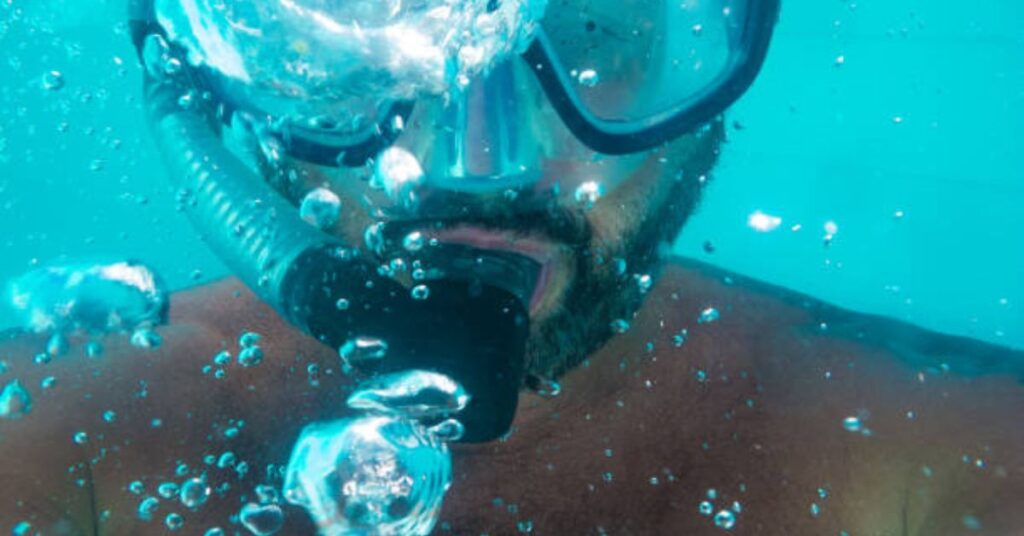
Ascending safely during your scuba dive is one of the most critical steps to protect yourself from pressure-related injuries like decompression sickness (DCS) and lung barotrauma. Proper ascent techniques help your body safely eliminate dissolved gases and ensure a smooth return to the surface.
Here’s a detailed, step-by-step guide to the basic rules of scuba diving ascent:
1. Monitor Your Depth and Ascent Rate
Use a reliable dive computer or depth gauge to constantly track your current depth and control your ascent speed. Ascending too quickly is the primary cause of DCS, so maintain a controlled ascent rate of no more than 30 feet (10 meters) per minute. Many dive computers will alert you if you’re ascending too fast, so always pay attention to these warnings.
2. Adjust Your Buoyancy Regularly
As you rise, the pressure decreases, causing your buoyancy control device (BCD) to expand. To prevent an uncontrolled rapid ascent, you must gradually release air from your BCD to maintain neutral buoyancy. This careful adjustment keeps your ascent steady and safe, preventing sudden surges toward the surface.
3. Perform a Safety Stop
Before surfacing, always perform a safety stop—usually for about 3 minutes at approximately 15 feet (5 meters) depth. This pause allows your body to off-gas excess nitrogen safely, significantly reducing the risk of decompression sickness.
Pro Tip: Ascend with Your Buddy
Never ascend alone. Always rise together with your dive buddy, maintaining close proximity and regular eye contact. Watch for their hand signals or movements to ensure you’re both safe and aware of any issues. Ascending as a team enhances safety and makes emergencies easier to manage.
By following these ascending rules, you protect yourself from common diving injuries and contribute to a positive, worry-free diving experience. Remember, a slow and controlled ascent is key to safe scuba diving.
Conclusion
Scuba diving offers a breathtaking glimpse into the underwater world, full of vibrant marine life and stunning landscapes. However, this incredible adventure demands respect for essential safety and environmental rules. By understanding and strictly following scuba diving guidelines—such as never holding your breath, mastering safe ascent techniques, and adhering to important scuba diving and flying rules—you protect not only yourself but also the fragile ecosystems beneath the waves.
Whether you’re a beginner or a seasoned diver, these safety protocols are the foundation of every successful dive. They help prevent injuries like decompression sickness and lung barotrauma, ensure smooth and enjoyable dives, and promote a sustainable diving culture for generations to come.
So, are you ready to take the plunge? Commit to these must-know scuba diving rules, dive within your limits, and respect both your body and the environment. Doing so will unlock a lifetime of safe and unforgettable underwater experiences.
Happy bubbles—and safe diving!
FAQs About Scuba Diving Rules
What is the most important rule in scuba diving?
Never hold your breath while diving. Continuous breathing ensures that expanding air can safely escape, preventing lung injuries.
How long should I wait to fly after scuba diving?
The general recommendation is to wait 12-24 hours, depending on your dive profile. Always consult your dive computer for specific guidelines.
What is the golden rule of scuba diving?
The golden rule is to never hold your breath and to always ascend slowly.
Can I dive if I have a cold?
It’s not advisable to dive with a cold. Blocked sinuses can prevent proper equalization, leading to discomfort or reverse block.
What’s the rule of thirds in scuba diving?
The rule of thirds helps manage air supply: use one-third for the outward journey, one-third for the return, and reserve one-third for emergencies.


